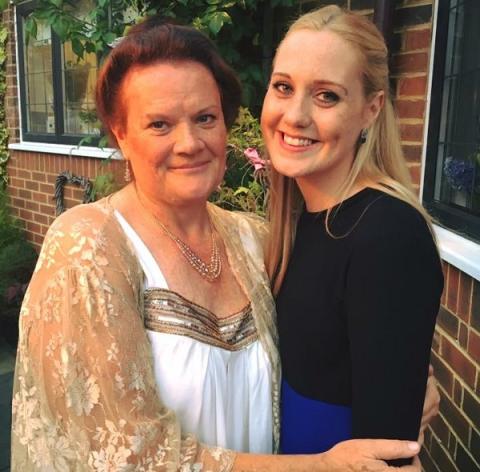Listen to this information
Audio chapters
+
-
Intro: 00:00-00:20
What is a haploidentical transplant?: 00:21-01:27
Who might need a haploidentical transplant?: 01:28-02:50
What will happen befor a haploidentical transplant?: 02:51-03:50
What will happen during a haplo transplant?: 03:51-04:22
What will happen after a haplo transplant?: 04:23-04:50
Recovering from a haploidentical transplant: 04:51-end
What is a haploidentical transplant?
If you need a stem cell transplant, we’ll make every effort to find you a matching donor. Matching is based on your human leukocyte antigen (HLA) tissue type – your HLA is what makes you ‘you’. It’s part of your individual genetic make-up, so it’s not always possible to find a perfect match.
An alternative option is to have a haploidentical transplant, often called a ‘haplo’. A haplo transplant uses stem cells from a family member whose tissue type is half-matched to yours:
- Children are always a half-match for their biological parents.
- Parents are always a half-match for their biological children.
- Siblings have a 50% chance of being a half-match for each other.
This means you have a greater choice of potential donors – almost everyone has at least one potential haploidentical match in their family.
What is a stem cell transplant?
If you haven’t yet read our page on understanding stem cell transplants, we recommend taking a look at the information to help you learn what it involves.
Who might need a haploidentical transplant?
Depending on the type of blood cancer or blood disorder you have, a haploidentical transplant could be an option if no perfectly matched donor is found. Haploidentical transplants are becoming more common because they can help find a suitable donor quickly. Your transplant team will make the best possible decision for your situation.
Unfortunately, haploidentical transplants are not suitable for everyone. As well as this, they aren’t available in every hospital – talk to your transplant team about your options.
Haploidentical transplants might also put you at higher risk of developing post-transplant complications, as there are more mismatches between you and your donor. Remember, in a haploidentical transplant, your relative is only a half-match donor. However, with advances in how doctors perform transplants and post-transplant care, this can be a good alternative if you don’t have an HLA-matched donor.

I'm really close to my mum, as a result of everything I have been through. My mum stayed by me, always.
Megan received stem cells from her mum to treat aplastic anaemia. You can read their story on our blog.
What will happen before a haploidentical transplant?
Before a haploidentical transplant, both you and your relative will need to have some tests and medical procedures.
Your relative:
If your relative is a suitable match and wants to donate their stem cells, your transplant centre will arrange a ‘donor assessment’. They’ll have a medical check to make sure they’re fit and well enough to donate before doing so.
For more information, see our page on donating your stem cells to a relative.
You:
You will have conditioning therapy to prepare your bone marrow and immune system for the new cells. It involves chemotherapy and sometimes a type of radiotherapy called total body irradiation (TBI). This targets and destroys any remaining damaged cells causing your condition.
What will happen during a haplo transplant?
Your transplant will normally take place the day after your conditioning therapy finishes. Your relative’s stem cells will arrive as a liquid in a small bag. This liquid then passes through a thin tube into your bloodstream, just like a blood transfusion.
As this isn’t an operation, you won’t experience any pain during the transplant and you’ll be awake the whole time.
What will happen after a haplo transplant?
Some people need extra treatment after the stem cell transplant. You might have:
- more chemotherapy
- extra infusions of white blood cells called lymphocytes
Your transplant team will talk to you about your individual treatment plan – you can always ask them questions if you’re unsure.
Recovering from a haploidentical transplant
You’ll probably stay in hospital for about three to four weeks after your transplant. This time will be spent in protective isolation to give your immune system time to start rebuilding. You’ll have your own room with safety measures in place to reduce the risk of picking up an infection.
For more information about how to cope during this time, see our page on staying in protective isolation.
Once you get back home, your recovery will probably affect many aspects of your life. It could take 6 to 12 months before your activity levels start returning to how they were before.
For more information and advice, see our recovery section.
Will I get side effects after a haplo transplant?
After any type of transplant, many people experience a range of side effects, both short and long term. Most side effects apply to all types of transplants, while others are more specific to certain types.
